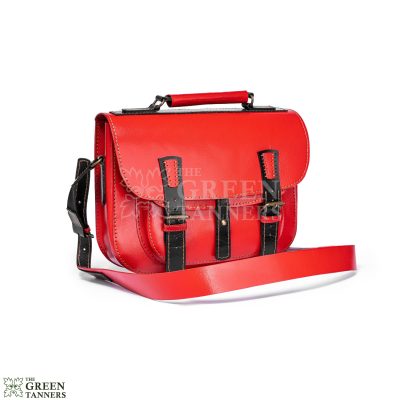Introduction
Leather goods require proper care and storage to retain their quality and lifetime. The natural properties of leather make it sensitive to damage from environmental factors such as temperature, humidity, sunlight, and improper storage conditions. Whether you own leather bags, jackets, shoes, or leather accessories, knowing the best way to store them can ensure they stay in excellent condition for years to come.
As a result, it is critical to understand how to store leather goods in order to avoid damage and extend their lives. So, we will explore various tips and guidelines to help you store your leather items effectively.
How to Store Leather Goods: Factors to Consider
When it comes to storing leather goods, several factors need to be considered to maintain their quality:
Temperature and Humidity Control
Extreme temperatures and humidity levels are harmful to leather. Leather should be stored in a cool, dry environment with stable temperatures and humidity. Fluctuations in these conditions can lead to cracking, warping, or discolouration of the leather.
Avoiding Direct Sunlight
It’s crucial to avoid exposing them to direct sunlight. Excessive exposure to sunlight can cause the leather to fade, dry, and crack. When storing or displaying leather items, ensure they are kept away from windows or areas with intense sunlight.
Proper Ventilation
Proper ventilation is essential for preserving the quality of leather goods. Avoid keeping them in sealed boxes or plastic bags to ensure proper airflow. Instead, use breathable fabric or cotton dust bags. Choose a cool, dry storage space with sufficient airflow that is out of direct sunlight. By following these practices, you can maintain the integrity and longevity of your leather items.
Protection from Dust and Dirt
Dust and dirt can accumulate on leather surfaces over time, leading to stains or scratches. Keep leather goods covered or stored in dust bags to shield them from debris. Regular cleaning is essential, using a soft, dry cloth or a leather cleaner to gently remove dust and debris. Avoid water and harsh chemicals. Store leather goods in a cool, dry place away from sunlight, using dust bags or cotton pillowcases for protection.
Leather Storage Duration
The duration of leather storage is determined by several factors, including the condition of the leather, storage circumstances, and upkeep. Leather products can survive for many years or even decades if taken care of and stored properly. It is best to preserve leather items in a cool, dry environment away from sunlight and high temperatures. Regular cleaning, conditioning, and protection with leather care products can help maintain the longevity of leather.
Cleaning and Preparation
Before keeping leather goods, they must be well cleaned and prepared:
Cleaning Leather Goods Before Storage
Remove any dirt or residue from the surface of the leather using a soft cloth or a brush specifically designed for leather cleaning. Be gentle to avoid scratching the material. For more stubborn stains or grime, you can use a mild soap solution or a leather cleaner specifically designed for the purpose.
Applying Leather Conditioner
Before storing leather, use a leather conditioner to keep it hydrated while preventing it from drying out or getting hard. Choose a conditioner made especially for the type of leather you’re using and follow the directions provided by the manufacturer.
Removing Stains
Remove any stains on the leather before storing. Use leather-specific stain removers and odour-neutralising products to ensure your items are fresh and clean. Pay extra attention to areas that are prone to drying out, such as seams and creases. Allow the conditioner to penetrate the leather for a few minutes, and then use a clean cloth to buff away any excess conditioner. This will help to enhance the shine and suppleness of the leather.
Types of Leather Goods and Leather Storage Tips
Different types of leather goods require specific storage considerations. Here are some tips for storing common leather items:
Leather Bags and Purses
When storing leather bags, empty them of any contents and stuff them with acid-free tissue paper or bubble wrap to help maintain their shape. Place them in breathable dust bags and avoid hanging them, as they can distort their shape over time.
Leather Jackets and Coats
To prevent creases and maintain the shape of leather jackets and coats, use padded hangers or fold them neatly. Avoid using wire hangers that can leave marks on the shoulders. If folding, ensure the item is not tightly compressed to avoid permanent wrinkles.
Leather Shoes and Boots
Clean and polish leather shoes before storage. Insert shoe trees or stuff them with acid-free tissue paper to maintain their shape. Store shoes in breathable shoe bags or boxes to protect them from dust and allow air circulation.
Leather Accessories (Belts, Wallets, etc.)
Store smaller leather accessories in separate compartments to prevent scratching. Keep them in a designated drawer or use storage organizers to maintain order and accessibility.
Leather Storage Tips
Breathable Storage Boxes
Choose breathable storage boxes made of natural materials like cotton or canvas. These materials allow air circulation and prevent the buildup of moisture, reducing the risk of mould or mildew.
Avoiding Plastic Bags
Avoid storing leather things in plastic bags or wraps, as they can trap moisture and cause the leather to become damp or mouldy. Instead, use breathable fabric dust bags or acid-free tissue paper for protection.
Using Acid-Free Tissue Paper
When storing leather, especially those prone to scratches or colour transfer, wrap them in acid-free tissue paper to create a protective barrier between them. Acid-free tissue paper prevents acidic reactions that could damage the leather’s surface.
Maintenance During Leather Storage
Even when stored properly, leather goods require periodic maintenance:
Regularly Checking for Mold or Mildew
Inspect stored leather items regularly for signs of mould or mildew. If any are found, remove the affected items from storage and treat them immediately to prevent further damage.
Preventing Creases and Wrinkles
If you notice creases or wrinkles forming in stored leather items, gently smooth them out using your hands or a soft cloth. Avoid using excessive force or heat, as it can damage the leather.
Conclusion
It is critical to store leather goods properly to preserve their quality and ensure their longevity. By considering factors such as temperature and humidity control, using suitable storage boxes and materials, and following specific care instructions for different types of leather, you can protect your valuable leather things from damage and extend their lifespan. Remember to clean and condition them before storage, periodically check and maintain them, and take appropriate precautions when travelling. By following these guidelines, you can enjoy your leather goods for years to come.
FAQs
What should I do if my leather item gets wet?
If your leather item becomes wet, simply dab away excess moisture with a soft towel and allow it to air dry completely away from direct heat sources. Avoid using a hairdryer or placing the item in direct sunlight, as it can cause the leather to dry too quickly and potentially crack.





